| Srl | Item |
| 1 |
ID:
055876
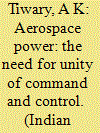

|
|
|
|
|
| Publication |
Apr-Jun 2003.
|
|
|
|
|
|
|
|
|
|
|
|
|
|
|
|
| 2 |
ID:
063812
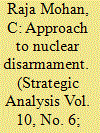

|
|
|
| 3 |
ID:
190101
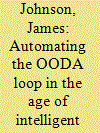

|
|
|
|
|
| Summary/Abstract |
This article argues that artificial intelligence (AI) enabled capabilities cannot effectively or reliably compliment (let alone replace) the role of humans in understanding and apprehending the strategic environment to make predictions and judgments that inform strategic decisions. Furthermore, the rapid diffusion of and growing dependency on AI technology at all levels of warfare will have strategic consequences that counterintuitively increase the importance of human involvement in these tasks. Therefore, restricting the use of AI technology to automate decision-making tasks at a tactical level will do little to contain or control the effects of this synthesis at a strategic level of warfare. The article re-visits John Boyd’s observation-orientation-decision-action metaphorical decision-making cycle (or “OODA loop”) to advance an epistemological critique of AI-enabled capabilities (especially machine learning approaches) to augment command-and-control decision-making processes. In particular, the article draws insights from Boyd’s emphasis on “orientation” as a schema to elucidate the role of human cognition (perception, emotion, and heuristics) in defense planning in a non-linear world characterized by complexity, novelty, and uncertainty. It also engages with the Clausewitzian notion of “military genius” – and its role in “mission command” – human cognition, systems, and evolution theory to consider the strategic implications of automating the OODA loop.
|
|
|
|
|
|
|
|
|
|
|
|
|
|
|
|
| 4 |
ID:
053631
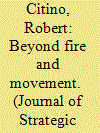

|
|
|
| 5 |
ID:
151426


|
|
|
|
|
| Summary/Abstract |
A key organizational challenge for all modern militaries is instituting an effective command-and-control (C2) structure for joint operations. China has been a relative latecomer to joint operations, with a persistent weakness in joint C2. Reforms launched in early 2016 sought to overcome this challenge by establishing a permanent two-level joint C2 structure. Although not a ‘tipping point’ that will lead ineluctably to stronger operational effectiveness, this reform is nonetheless an important milestone in an evolutionary process towards better PLA joint operations. The result could be added operational challenges for several of China’s neighbors and the United States.
|
|
|
|
|
|
|
|
|
|
|
|
|
|
|
|
| 6 |
ID:
074994
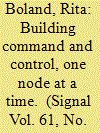

|
|
|
| 7 |
ID:
138286
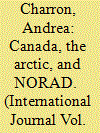

|
|
|
|
|
| Summary/Abstract |
The Arctic is perceived as an area that requires increased North American Aerospace Defense Command (NORAD) attention. On the one hand, the region has always been of particular concern to NORAD, especially during the Cold War. From this perspective, attention to the Arctic is business as usual. On the other hand, increased potential traffic in the region due to warmer temperatures, natural resource exploitation, and tourism could increase threats to North America and create the need for a new NORAD posture. This paper reviews the challenges facing the Arctic, the perceived new urgency for attention, the command and control structures of NORAD, and NORAD’s specific preoccupations in order to answer the question: does the Arctic represent status quo for NORAD or does NORAD need to change, fundamentally, its approach to the North? This paper ultimately argues for the former.
|
|
|
|
|
|
|
|
|
|
|
|
|
|
|
|
| 8 |
ID:
055014
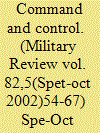

|
|
|
| 9 |
ID:
140973
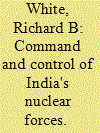

|
|
|
|
|
| Summary/Abstract |
The Indian government has not made a public comment about the status of its nuclear weapon program since approving a nuclear doctrine in 2003. However, there is now enough information in the public domain to determine that the command-and-control system for the nuclear program has steadily matured in accordance with the intent of the approved nuclear doctrine. The Indian government has successfully mitigated many of the issues that plague the conventional military. The result is a basic command-and-control system that is focused only on the delivery, if ordered by the prime minister, of nuclear weapons. The system is not as robust as those of the United States and Russia, but is in place and ready as new Indian nuclear weapons enter into operation. The command-and-control system is developing to meet India's needs and political compulsions, but not necessarily as part of a more assertive nuclear policy.
|
|
|
|
|
|
|
|
|
|
|
|
|
|
|
|
| 10 |
ID:
017486
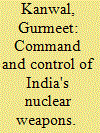

|
|
|
|
|
| Publication |
Sept 2000.
|
| Description |
15-19
|
|
|
|
|
|
|
|
|
|
|
|
|
|
|
|
| 11 |
ID:
058288


|
|
|
| 12 |
ID:
067451
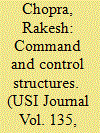

|
|
|
| 13 |
ID:
128793
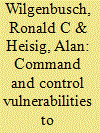

|
|
|
| 14 |
ID:
054891
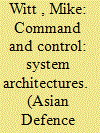

|
|
|
| 15 |
ID:
186091
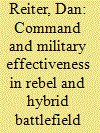

|
|
|
|
|
| Summary/Abstract |
Conventional thinking frames battlefield coalitions as collections of national armies fighting together as multinational coalitions. However, wars also include rebel groups fighting together as coalitions, and rebel groups fighting alongside states in hybrid coalitions. This paper seeks to better understand rebel and hybrid battlefield coalitions, focusing on command and operational military effectiveness. The paper first presents basic ideas about coalition command and military effectiveness from conventional wisdom on multinational coalitions. It then builds on these ideas to explore potential similarities and differences between multinational coalitions on one hand and rebel and hybrid coalitions on the other. In particular, the paper focuses on the nature of different command structures, the varying operational military effectiveness advantages for unified coalition command, and the political motivations for coalition members to resist creating unified command, despite potential effectiveness benefits. The paper concludes by providing policy recommendations to states who lead hybrid coalitions.
|
|
|
|
|
|
|
|
|
|
|
|
|
|
|
|
| 16 |
ID:
130547
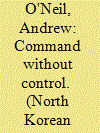

|
|
|
|
|
| Publication |
2014.
|
| Summary/Abstract |
Purpose-To assess the prospects for managing crises on the Korean Peninsula.
Design/methodology/approach-this article investigates North Korea's nuclear behavior using theories of crisis instability, which focus on the actual or perceived incentives of a nuclear weapon state to strike first during a crisis. Findings-Pyongyang's embryonic command and control capabilities mean that rapid escalation to full-scale conflict is a greater prospect than generally acknowledged. Practical implications-This raises questions about the ability of protagonists to avoid escalation resulting from miscalculation in future crises on the Korean Peninsula and has implications for policy makers in devising strategies to deter North Korea from undertaking behavior that risks escalation while reassuring elites in Pyongyang.
|
|
|
|
|
|
|
|
|
|
|
|
|
|
|
|
| 17 |
ID:
072686
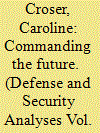

|
|
|
| 18 |
ID:
069140
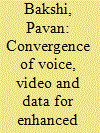

|
|
|
| 19 |
ID:
139645
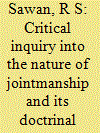

|
|
|
| 20 |
ID:
127136
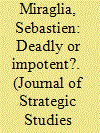

|
|
|
|
|
| Publication |
2013.
|
| Summary/Abstract |
This article examines the nuclear command and control (C2) system implemented in Pakistan since 1998, and discusses its potential consequences for the risk of inadvertent or unauthorised use of nuclear weapons. I argue that troubled civil-military relations and Pakistan's doctrine of 'asymmetric escalation' account for the creation of a command and control system with different characteristics during peacetime and military crises. Although the key characteristics of Pakistan's nuclear C2 system allow relatively safe nuclear operations during peacetime, operational deployment of nuclear weapons during military standoffs is likely to include only rudimentary protections against inadvertent or unauthorised nuclear release. The implication of this study is that any shift from peacetime to wartime command and control procedures is likely to further destabilise Indo-Pakistani relations during the early stages of a diplomatic or military standoff, and introduce a non-trivial risk of accidental escalation to the nuclear level.
|
|
|
|
|
|
|
|
|
|
|
|
|
|
|
|